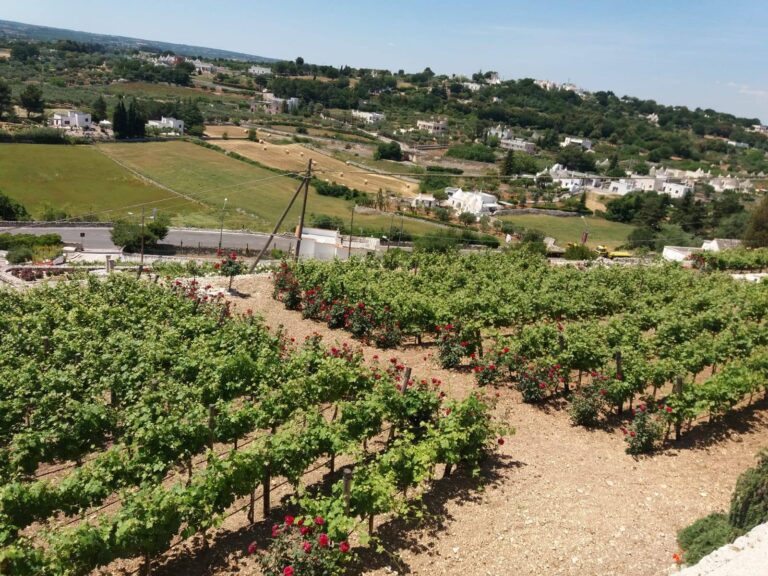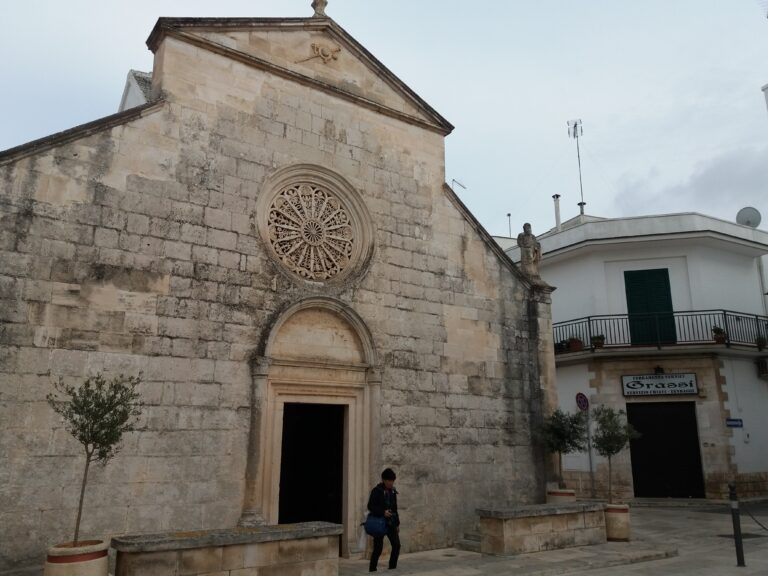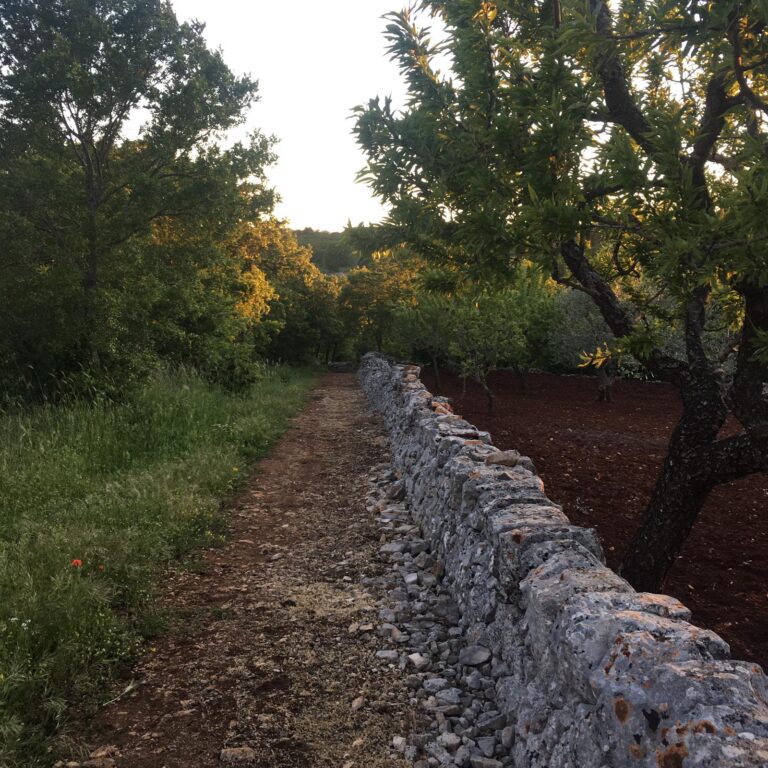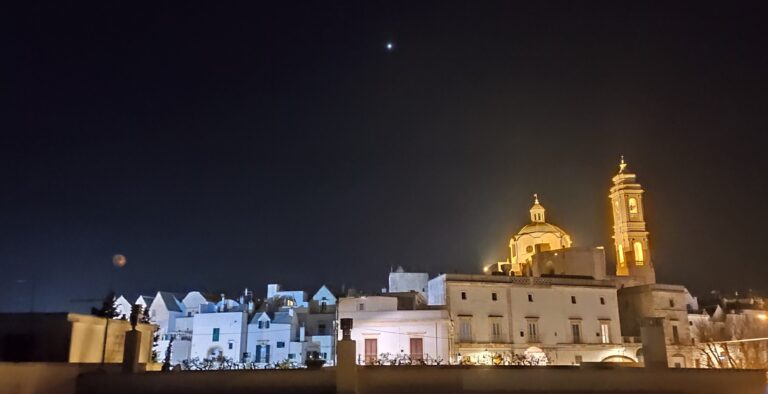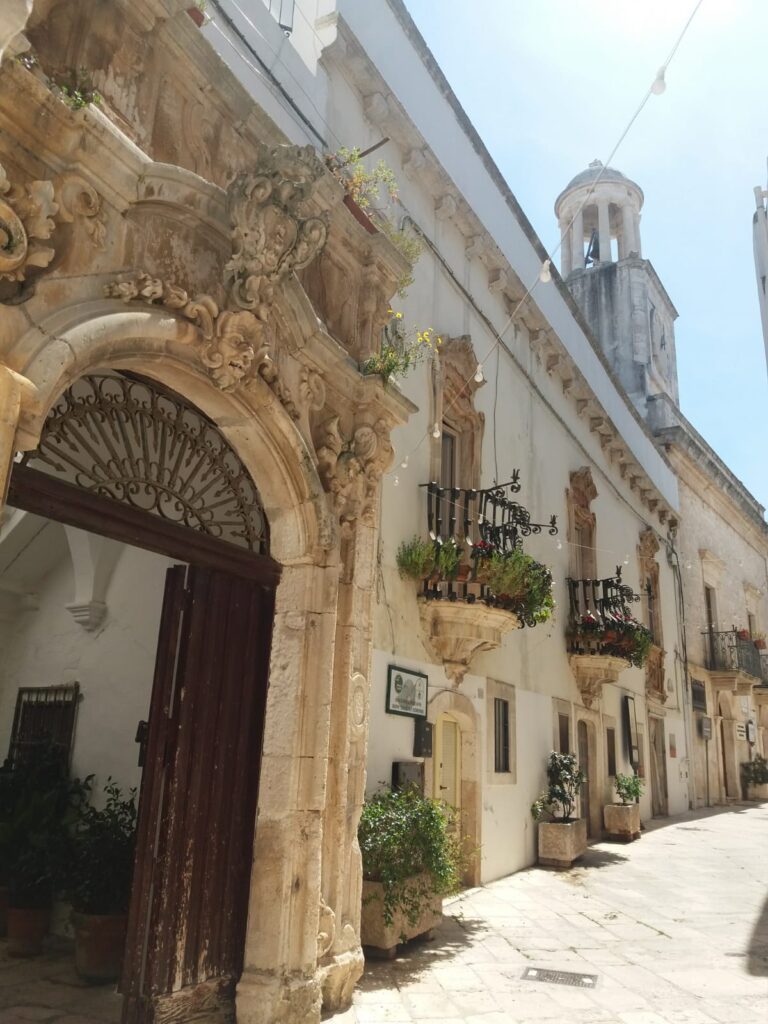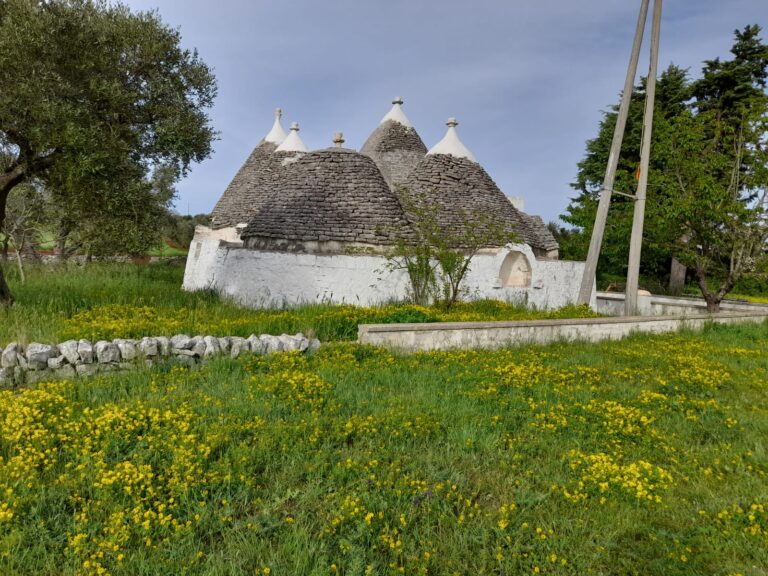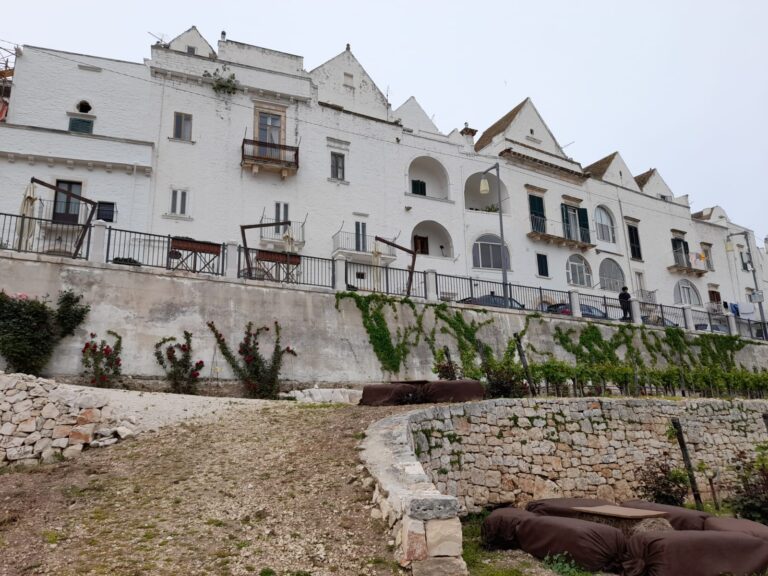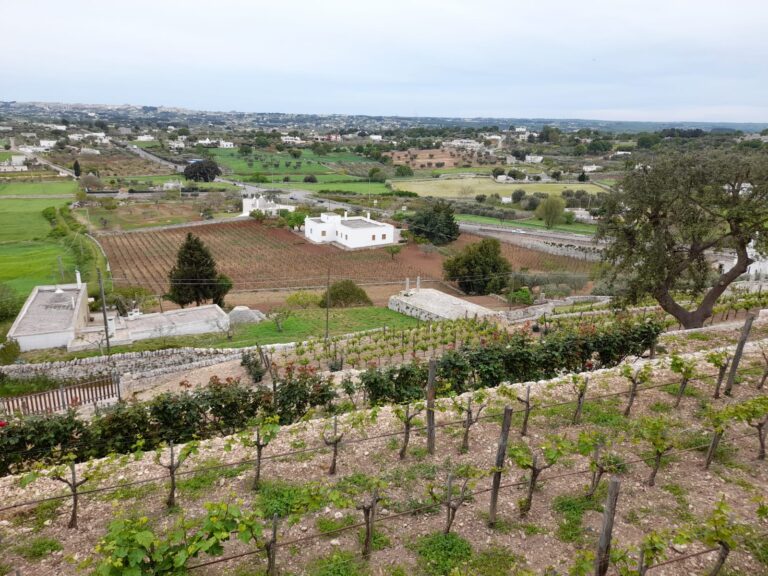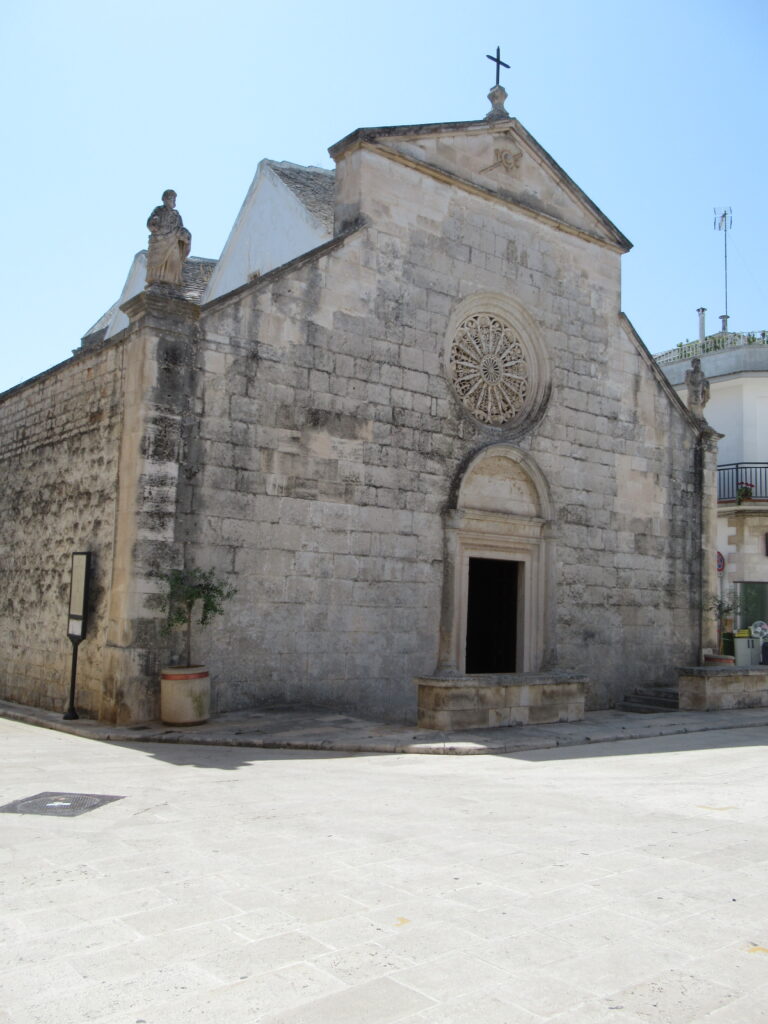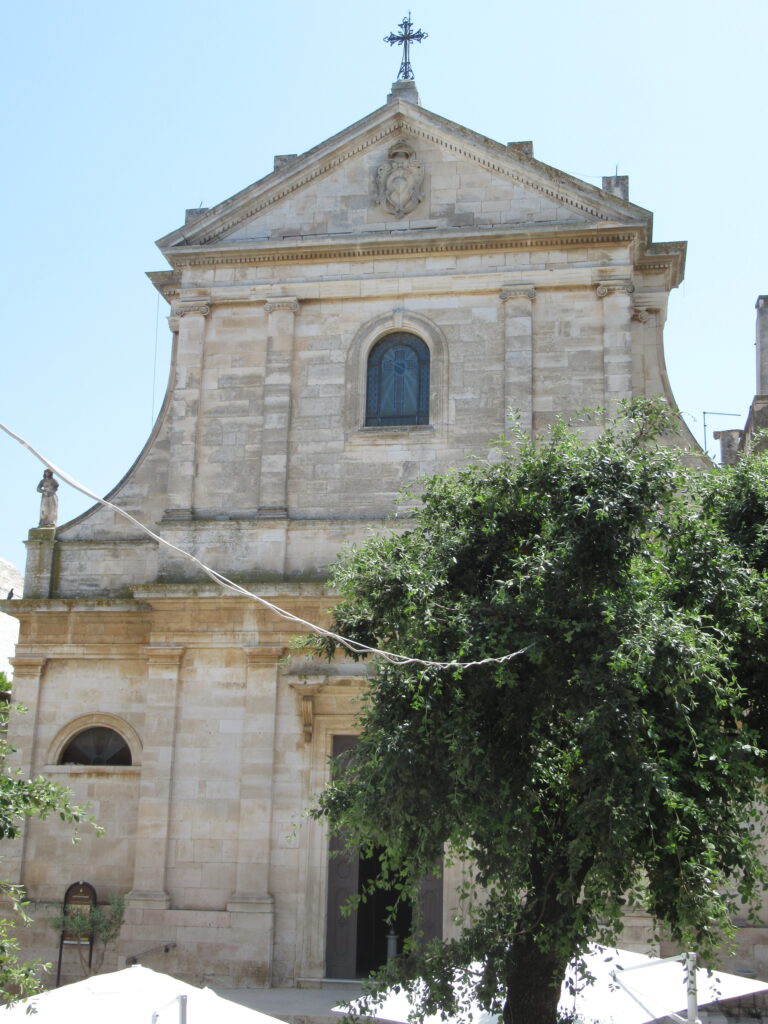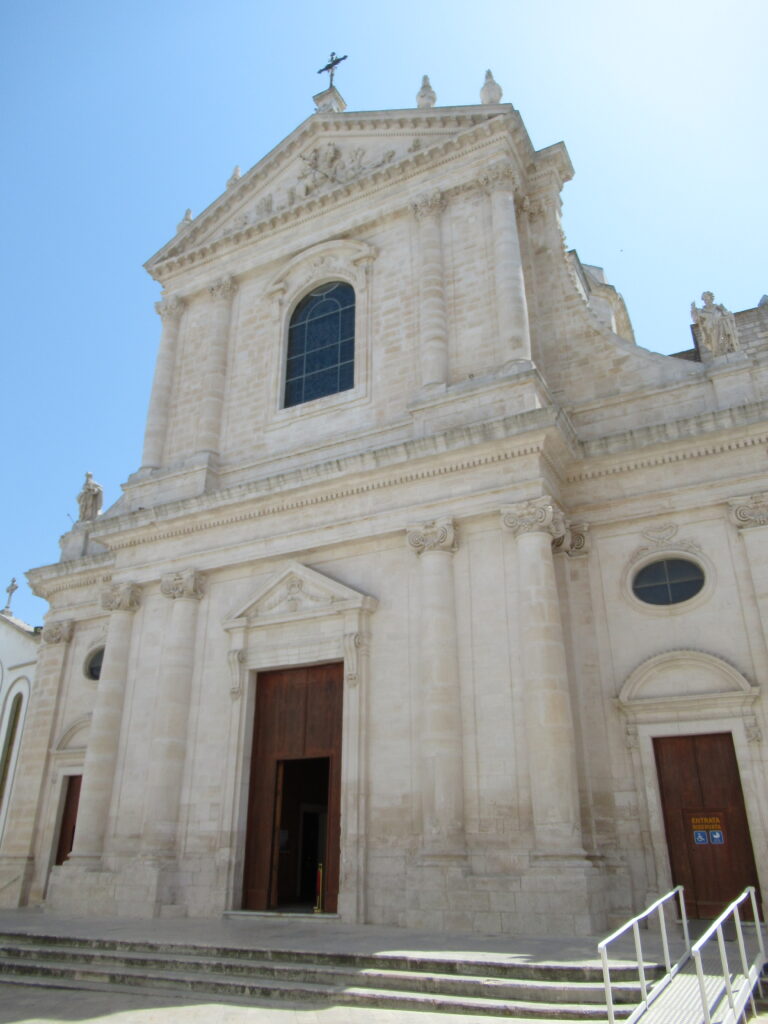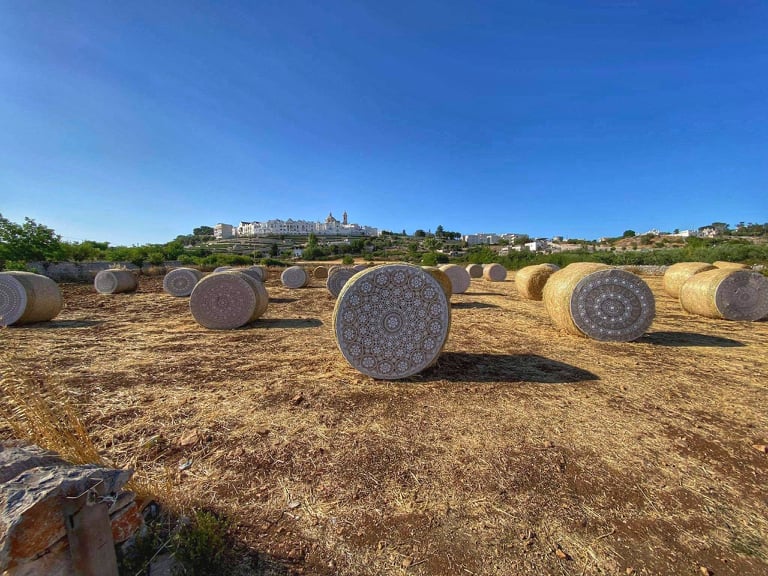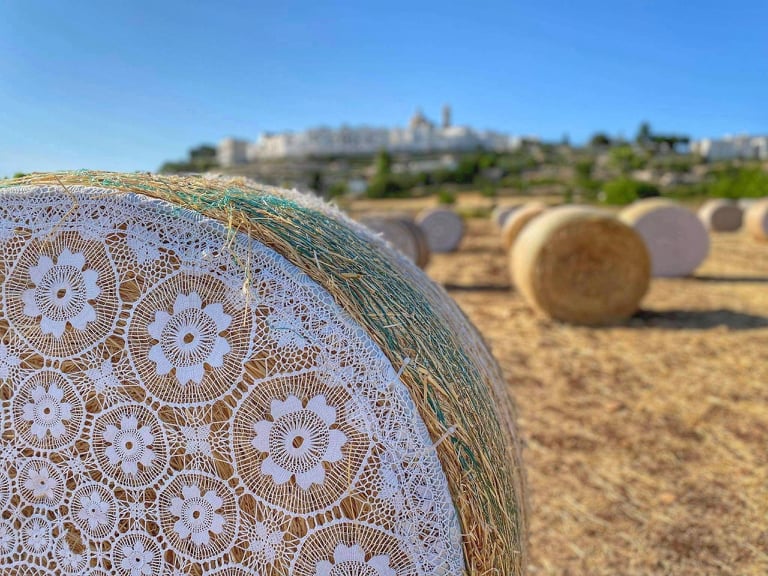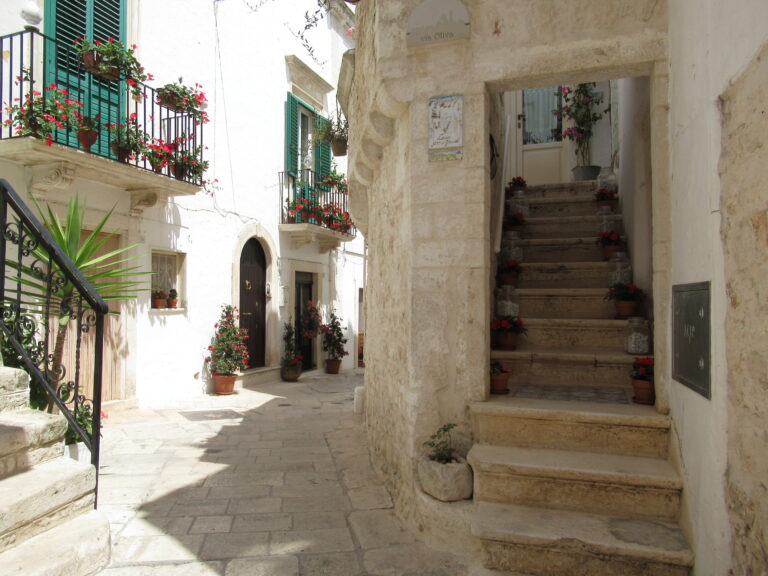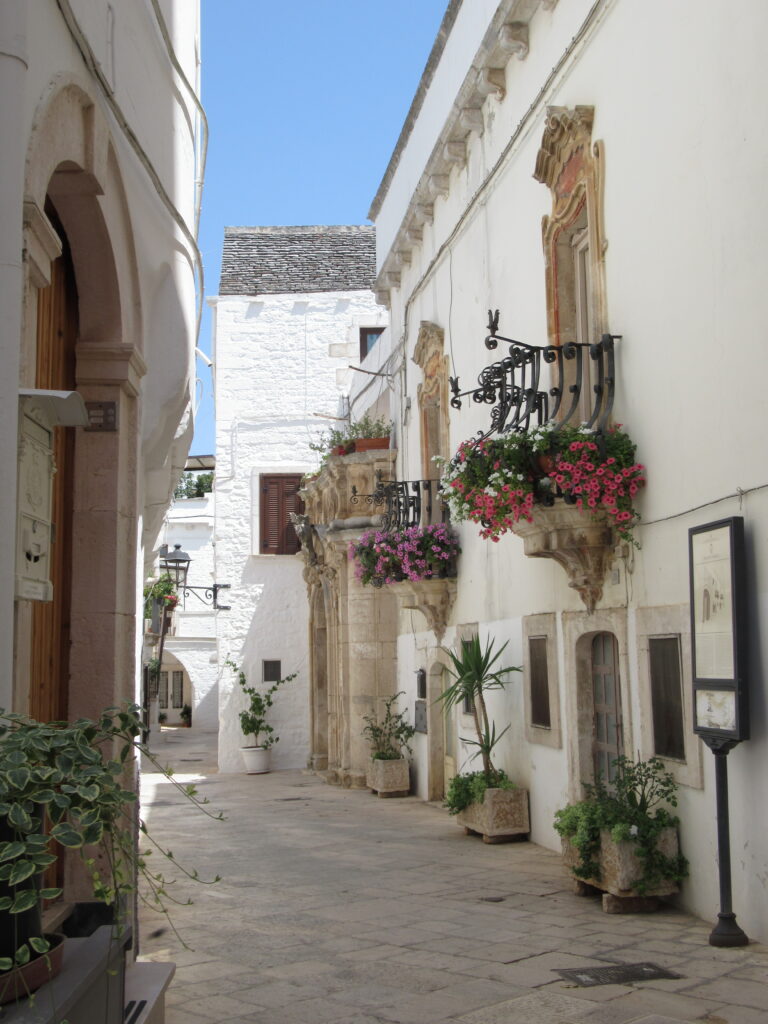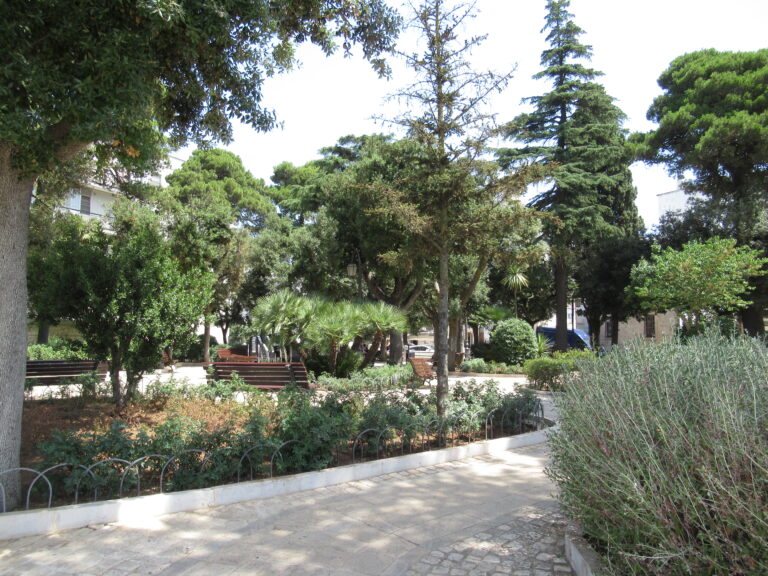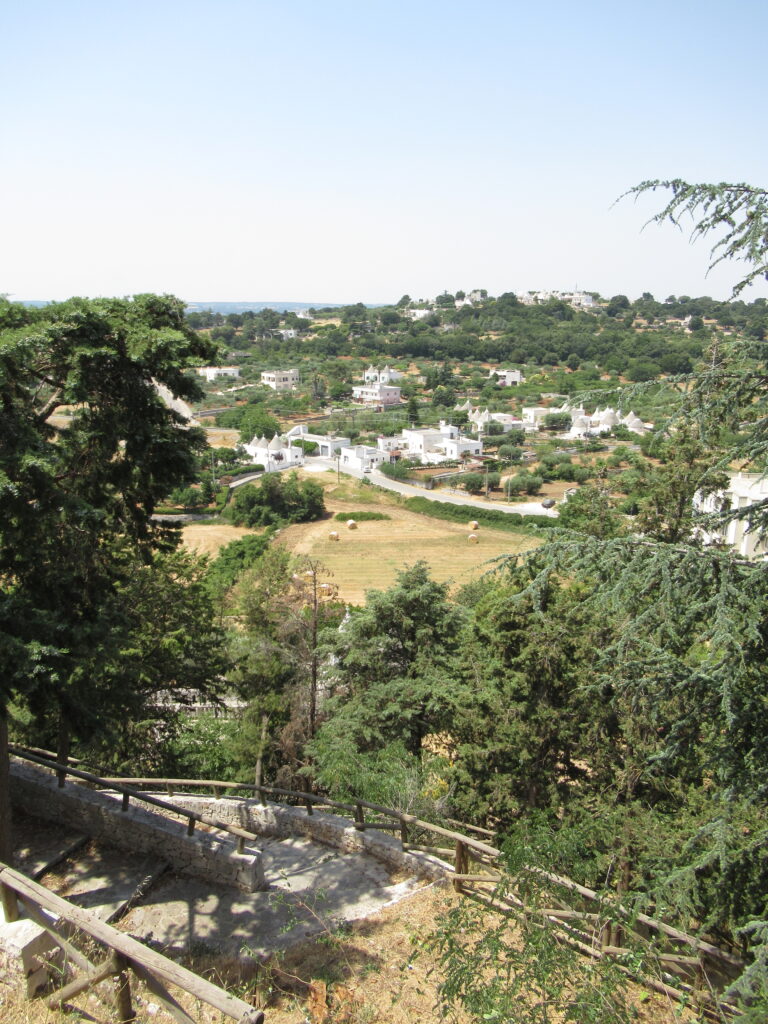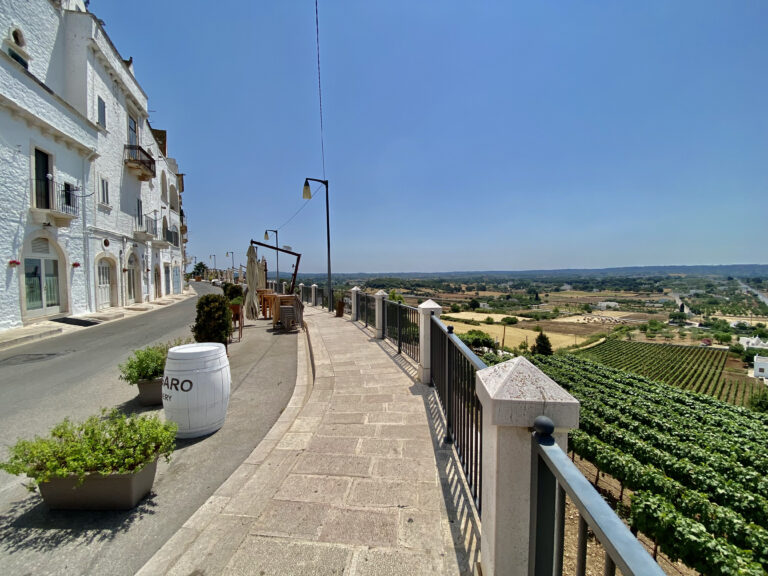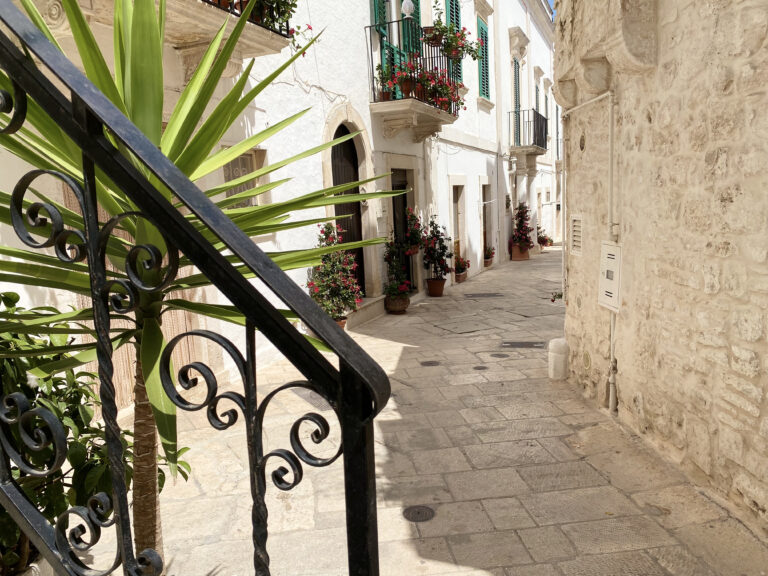Locorotondo
The town is located in the heart of Valle d’Itria on a relief 410 meters above sea level. Its name comes from the Latin “Locus rotundus”, due to its round old town.
One of the most beautiful villages in Italy, and honoured with the Orange Flag of Touring Club, the Green Flag of Agriculture and the Yellow Flag of Cycling Towns, it is characteristic for its historical town, and its wide countryside, including 150 inhabited contrade (quarters).
The most suggestive view is seen coming from Martina Franca, where it’s possible to admire via Nardelli, known as the seaside – even if you find the valley and not the sea, looking at vineyards, trulli, farmhouses and dry stonewalls, and where you walk close to the typical houses, cummèrse, the Mother Church’s dome and its bell tower.
The old town has two main entrances: Porta Vecchia or Porta Napoli, introducing Piazza Vittorio Emanuele, the living room of the historical town, while on the other side, there is Porta Nuova or Porta Lecce, and the street with the same name leads to the Mother Church of San Giorgio, in the heart of the old town. Important monuments are also the baroque Palazzo Morelli, the Churches of San Nicola, Madonna della Greca, San Rocco, Madonna del Soccorso, Spirito Santo (Holy Spirit) and Madonna della Catena.
From Largo Bellavista, from via Nardelli, and from the Public Garden, the Villa Comunale Garibaldi, you can relax the eyes toward the Valle d’Itria, whose name is due to the cult of the Virgin of Hodegitria, and towards its trulli, dry-stone walls, vineyards, olive groves, and the monumental complex of Sant’Anna di Renna, where an interactive museum takes place.
The stone, the nature, and the landscape give unmissable and breath-taking sceneries. Courts, streets and squares around the old town, for example, Largo Mazzini, local called “Largo della Rotella” and much other. In the countryside, you can visit Trullo di Marziolla, the oldest trullo of Itria Valley, rural churches like the Church in Contrada San Marco and Contrada Trito, the Cyclopath of the Acqueduct with its renovated path crossing our territory, and the Historic Garden of Masseria Ferragnano.
The commercial production is successful and embraces several fields. First of all food and wine, with excellent typical products, that you can taste in the restaurants or farms, such as the white wine, the “gnumerèdde suffuchète” (typical trip), the grilled meat, the triddo (typical homemade pasta). Then handmade production and industry, producing stone, wood, iron, fabric, with prestigious local producers and very laborious and active local workers.
Exclusive attractions for visitors and citizens are also music events, such as Locus Festival, Viva Festival, local band and orchestra, and cultural events about books, reading, and exhibitions immersed among flowered alleys and balconies.
You can visit Locorotondo doing the following tour
Start: Porta Nova.
After stopping in the closing Piazza Mitrano, you pass through the gate and walk from Via Porta Nova, finding the first examples of typical buildings, the cummèrse, with whitewashed façades, alleys and balconies with flowers, until Piazza Rodio, with the stunning St George Mother Church and its neoclassical façade.
Through via Oliva, you reach the precious Saint Nicola’s Church, belonging to the 600’, with its dried paintings and typical local architecture the barrel vault of the naïve and the altar with the conical roof of trullo. Walking along via Oliva and via Dottor Guarnieri, keeping looking upwards, you turn left in via Morelli in order to enjoy the beautiful Palazzo Morelli, its elegant portal and baroque balcony. Next, there is the Clock Tower, on the roof of the old building of the Municipality, which was also prison, while now it is the seat of the Public Library and the Tourist Information Centre.
Walking through via Antonio Bruno, your eyes are captured by Piazza Vittorio Emanuele II, the cozy living room that lets you reach Porta Vecchia, opposite to the public garden, Villa Comunale Garibaldi, balcony over the Itria Valley and next to the Church of Santissima Addolorata
After the gate and turning left, you find Via Nardelli and Largo Piave, here there is the small church, dedicated to the Lady of Succour To the right the amazing via Aprile leads you to Largo Bellavista, breathless sight view over the Itria Valley that is enjoyable from Via Nardelli, the “seaside” of Locorotondo. It is an exclusive view over the valley with urban vineyards, trulli, farmhouses, dry stonewalls, and you can have a look at the monumental Complesso di Sant’Anna di Renna, whose roofs are cummerse and where is located , an interactive museum, , Museo interattivo Perle di Memoria, reachable through Scalinata dei Templari or Scalinata di San Michele Arcangelo.
You reach the bottom of the town and can enjoy the most famous skyline, showing the circular shape of the village and its beauty. Coming up to via Nardelli, a few hundred metersfar away, there is another interesting church, he old Chiesa di Santa Maria della Greca, closeby Piazza Antonio Mitrano. In the church there are prestigious sculptures and in the nearby there is the church, Chiesa di San Rocco, joint patron of the town, just a few meters far from Largo Mazzini, a small square where in the past there was dove a wheel for orphan children.
If you have still time, you can’t miss Piazza Aldo Moro, the actual seat of the town hall, and the closer church, Chiesa dello Spirito Santo.
The tour could also begin from Piazza Aldo Moro, and walking up along Corso XX Settembre, you enter through Porta Vecchia and Piazza Vittorio Emanuele II, in order to discover the treasures of the old town.
Tour along the Apulian Cyclopath of the Aqueduct
- Cycling and walking tour
- Departure point: contrada Figazzano (between Locorotondo and Cisternino) reachable by car, transfer or bike
- Suitable for both adults and children. Not suitable for disabled persons
Do not miss the chance to walk or cycle along Ciclovia dell’Acquedotto pugliese, where you get lost in the sounds and smells of nature, enjoying an amazing landscape full of trull, dry-stone walls and the local main features. This tour is suitable for both adults and children who like discovering the countryside of Locorotondo and Itria Valley, Valle d’Itria, in the name of slow and sustainable tourism.
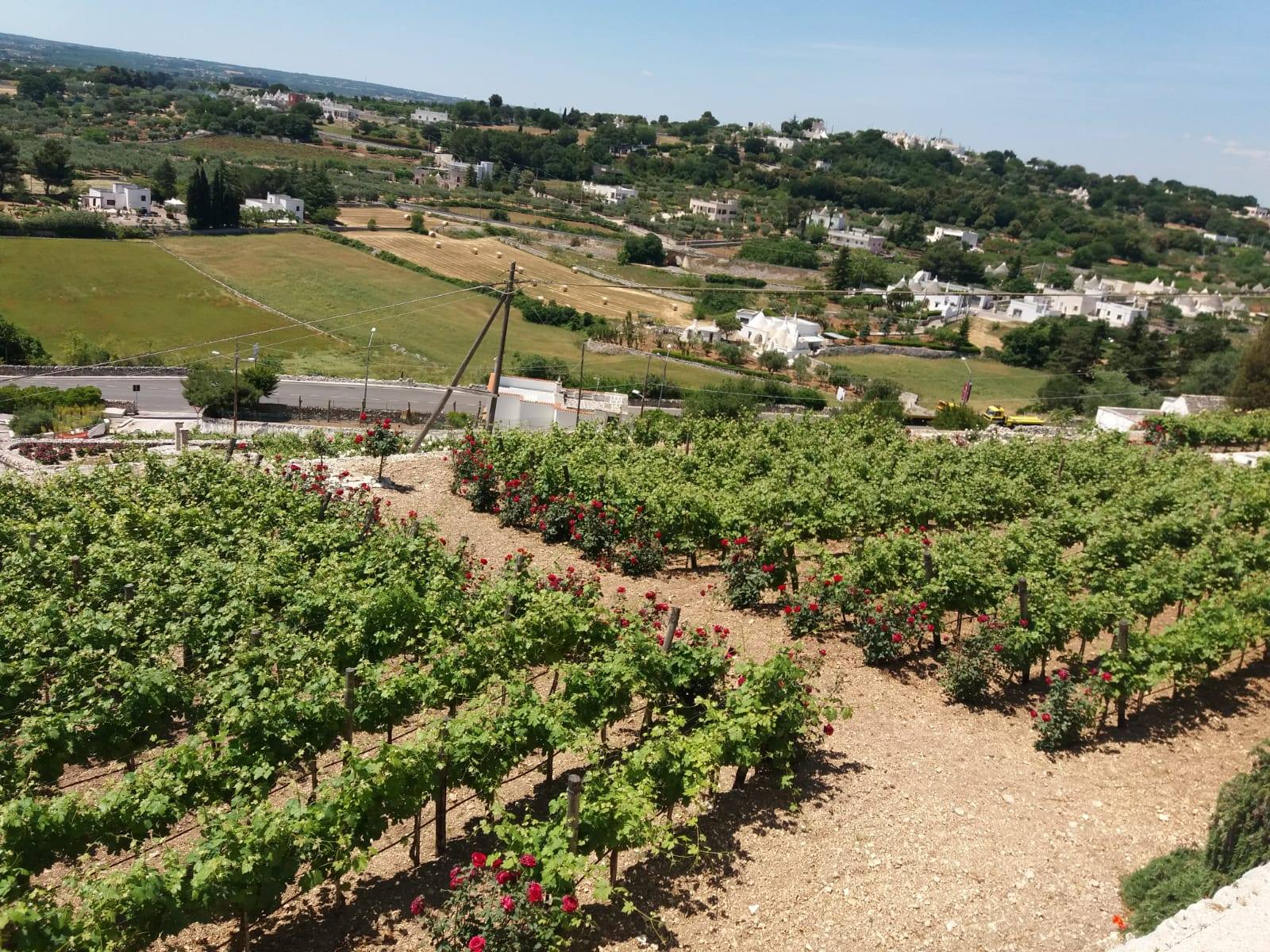
Itinerario del gusto
- Itinerario enegatronomico
- Borgo antico di Locorotondo raggiungibile a piedi, parcheggiando in Piazza Antonio Mitrano, Piazza Aldo Moro o Piazza Convertini.
- Le aziende nell’agro sono raggiungibili con mezzo proprio (auto o bicicletta in base alle distanze).
- A seconda del mezzo possono essere sempre accessibili.
Conosciuta come città del vino, non si può lasciare Locorotondo senza aver prima degustato un calice di vino locale accompagnato da prodotti tipici. Se siete nel centro storico potete fermarvi presso i wine shop o su Via Nardelli, lungo filari di vite e rose, che fanno da splendida cornice. Se volete visitare una cantina o azienda agricola, o addirittura partecipare alla loro attività di raccolta, potete spostarvi nell’agro e fare visita ai vari produttori, che saranno lieti di aprirvi le porte e farvi entrare nel loro mondo di-vino.
Locorotondo countryside among trulli, masserie and dry–stone walls
- Rural tour
- Contrada Serra, Contrada Grofoleo, Contrada Trito, Contrada Lamie di Olimpia, Contrada Mancini, Contrada San Marco…
- Reachable with different means of transport
- According to the mean of transport, location could be or not accessible
Locorotondo has 150 quarters populating Locorotondo: stone is the main character of the breathless landscape with farmyards, dry-stone walls, trulli, masserie, tacks, rural churches and nature. The countryside with its sound and smell is the “house” of the master of trulli, of typical food and the perfect frame for any picture. From the top of the hill, you can have a look at the inland and at the Adriatic coast. Some of the biggest and most panoramic quarters (contrade) are Contrada Serra, Contrada Grofoleo, Contrada Trito, Contrada Lamie di Olimpia, Contrada Mancini, Contrada San Marco.
